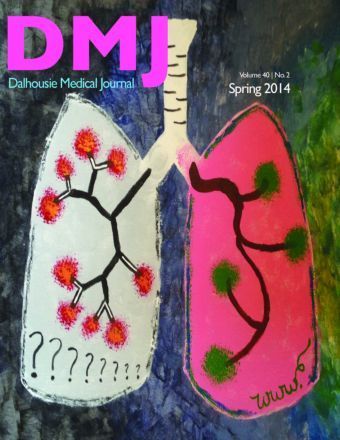The Role of Computed Tomographic Colonography in Colorectal Cancer Screening
DOI:
https://doi.org/10.15273/dmj.Vol40No2.4534Abstract
Objective: We conducted a literature review to identify the current state of knowledge regarding the optimal clinical use of computed tomographic colonography (CTC) in Canada, based on accuracy, patient safety, and costeffectiveness.Methods: Articles were retrieved from PubMed and the Cochrane Library. Retrieved studies were included based on relevance and appropriateness as determined by reviewing titles and abstracts. Studies were excluded if they were duplicated, grey literature, or non-peer-reviewed. Of the studies remaining after exclusions, reference lists were scanned to obtain further relevant articles.
Results: The literature reports comparable accuracy for detecting cancers and large polyps, yet CTC is less sensitive than colonoscopy for detecting small polyps. Most would agree that CTC is safer than colonoscopy, yet it is not without risk or adverse events. Lastly, although the true costs of CTC vs. colonoscopy are complex, the literature consistently demonstrates that CRC screening with CTC is less cost-effective than screening with colonoscopy.
Conclusion: Unless there are modifications to CTC that improve cost-effectiveness and/or accuracy, the future of CRC screening in Canada will remain reliant on colonoscopy. CTC is beneficial as an alternative to colonoscopy, but should remain available for selected indications. CTC has value, however, it has fallen short of initial expectations.
Downloads
Published
2014-05-07
How to Cite
Maddison, A. R., & Williams, G. (2014). The Role of Computed Tomographic Colonography in Colorectal Cancer Screening. DALHOUSIE MEDICAL JOURNAL, 40(2). https://doi.org/10.15273/dmj.Vol40No2.4534
Issue
Section
Review
License
Authors who publish with this journal agree to the following terms:
- Authors retain copyright and grant the journal right of first publication with the work simultaneously licensed under a Creative Commons Attribution License that allows others to share the work with an acknowledgement of the work's authorship and initial publication in this journal.
- Authors are able to enter into separate, additional contractual arrangements for the non-exclusive distribution of the journal's published version of the work (e.g., post it to an institutional repository or publish it in a book), with an acknowledgement of its initial publication in this journal.
- Authors are permitted and encouraged to post their work online (e.g., in institutional repositories or on their website) prior to and during the submission process, as it can lead to productive exchanges, as well as earlier and greater citation of published work (See The Effect of Open Access).


